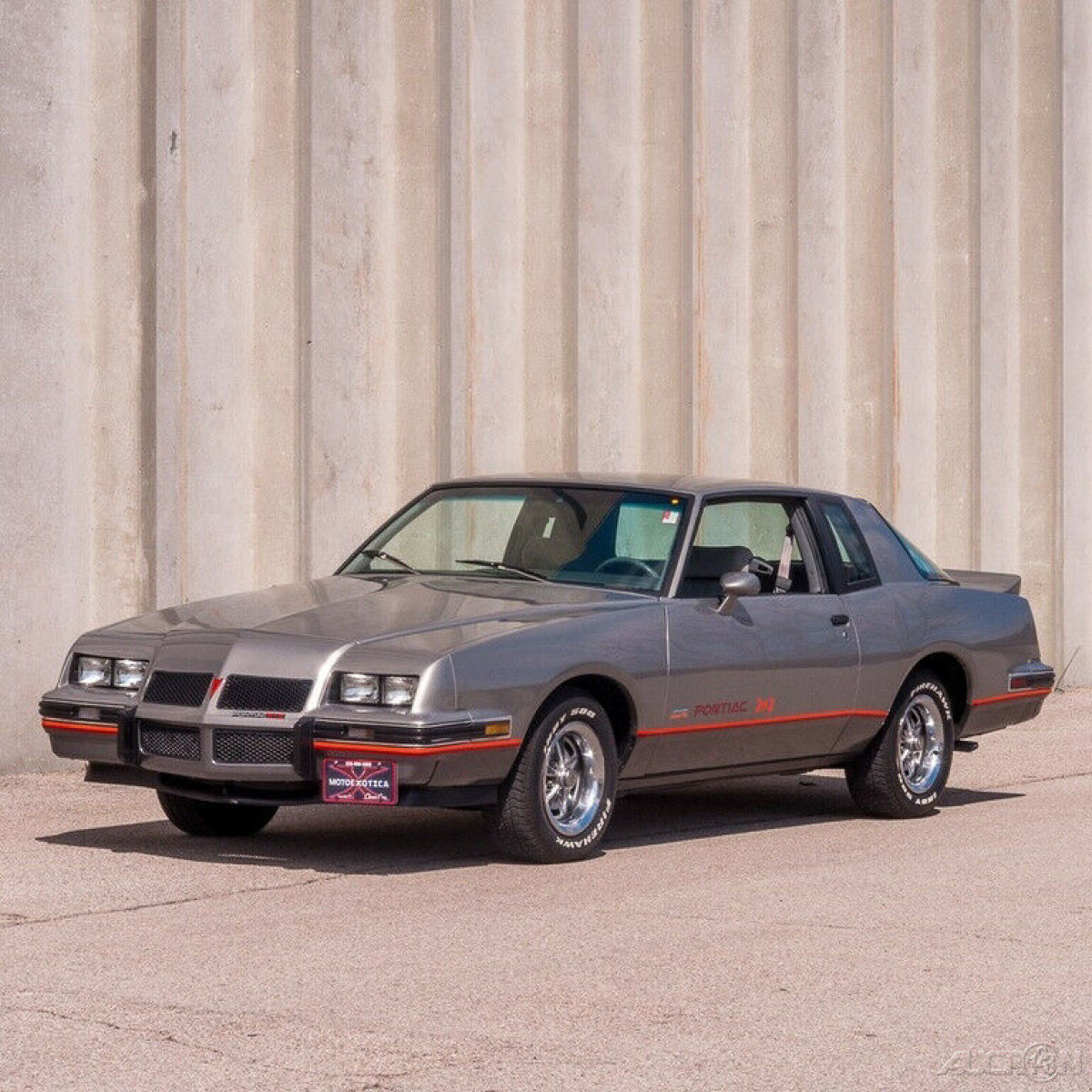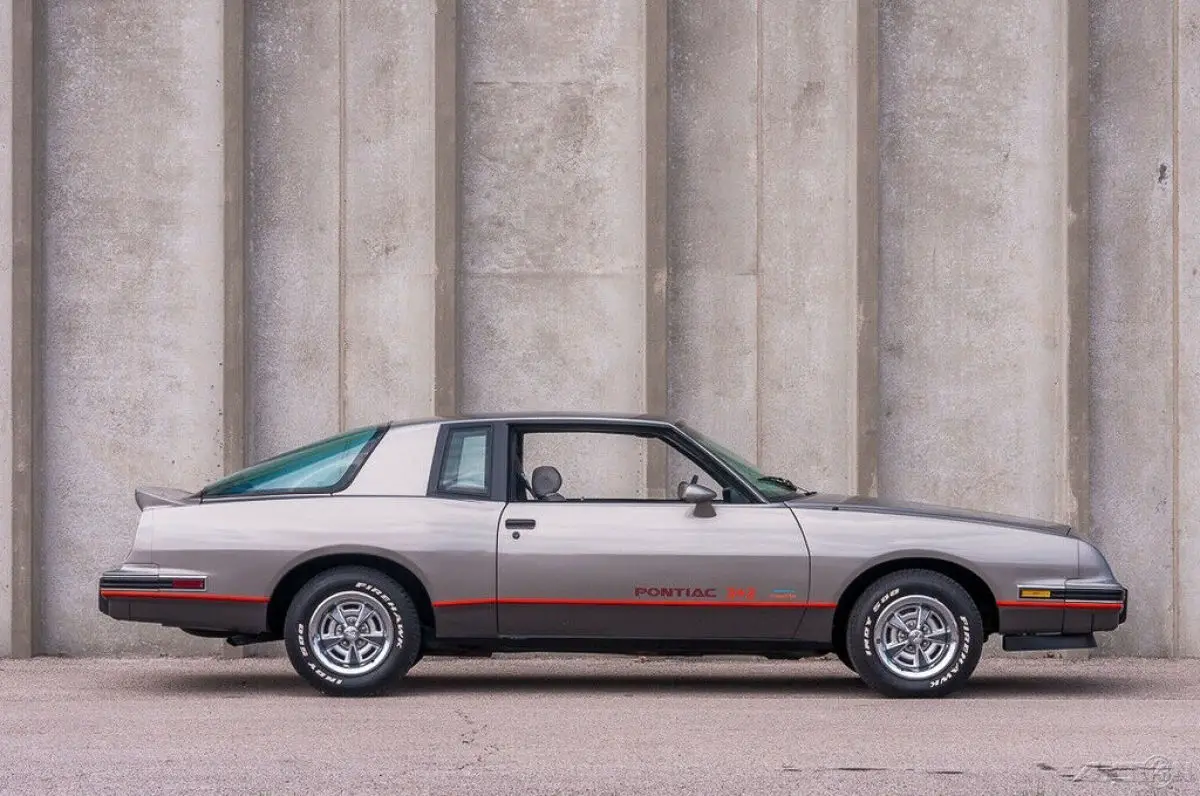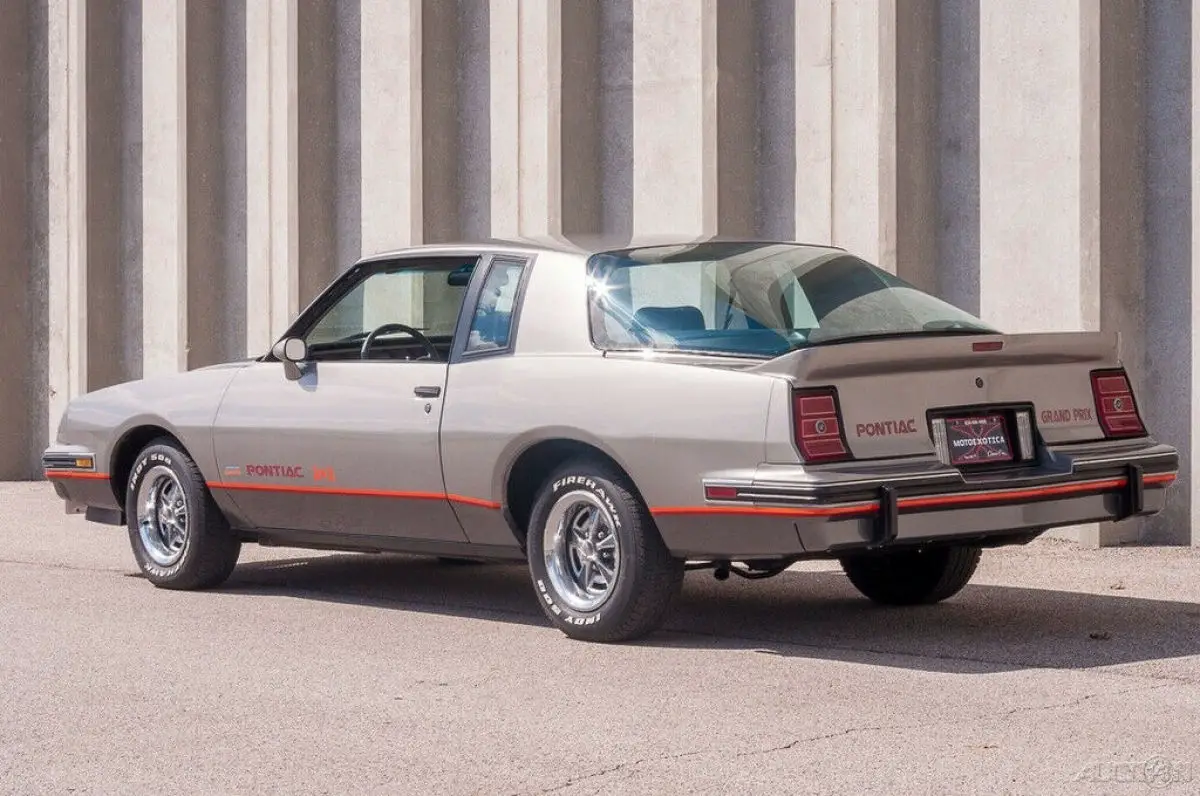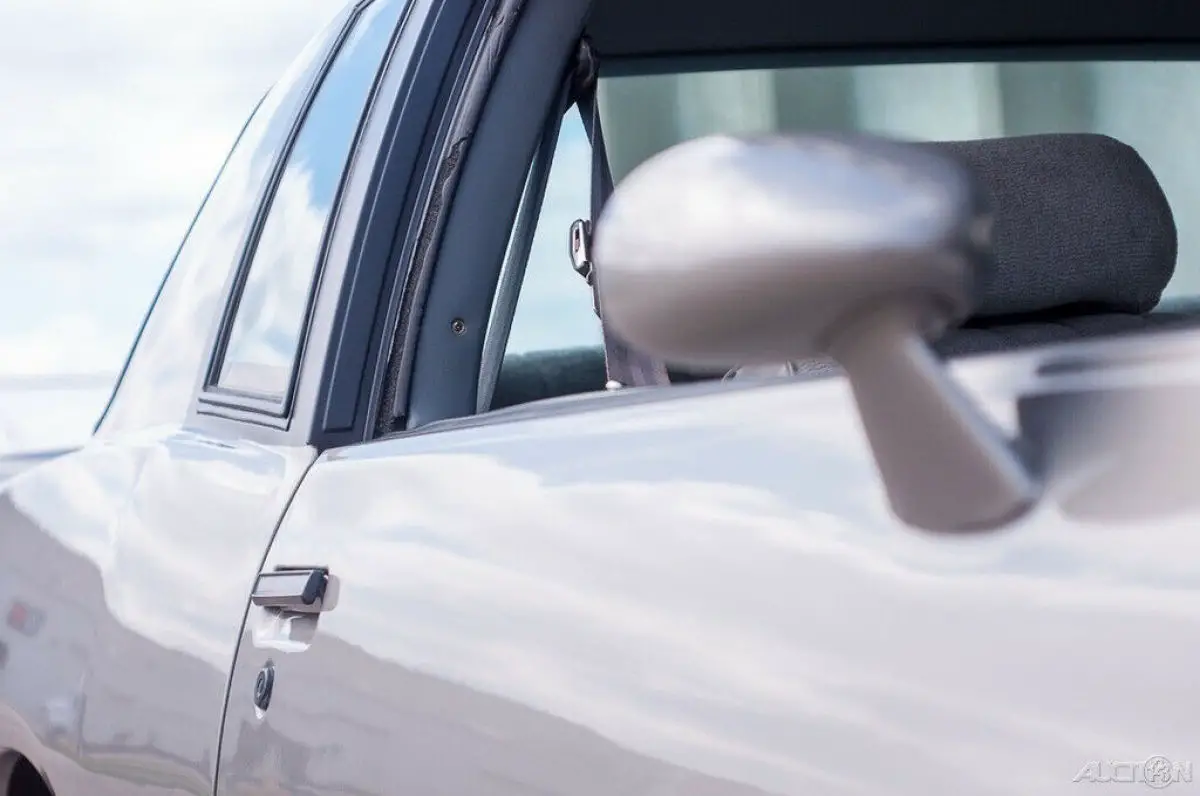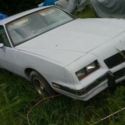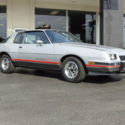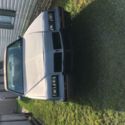1986 Pontiac Grand Prix 2+2 Aeroback
| Make: |
Pontiac |
| Model: |
Grand Prix |
| SubModel: |
2 Dr Coupe |
| Type: |
Coupe |
| Trim: |
Grand Prix 2+2 Aeroback |
| Doors: |
2 Doors |
| Year: |
1986 |
| Mileage: |
32642 |
| VIN: |
2G2GJ37H7G2290307 |
| Color: |
Silver |
| Engine: |
5L V8 16V |
| Cylinders: |
8 |
| Fuel: |
Gasoline |
| Transmission: |
Automatic |
| Drive type: |
RWD |
| Interior color: |
Gray |
| Vehicle Title: |
Clear |
| Item location: |
Fenton, Missouri, United States |
1986 Pontiac Grand Prix Grand Prix 2+2 Aeroback Additional Info:
1986 Pontiac Grand Prix 2+2 Aeroback• One of only 200 Richard Petty Editions produced• One of only 1,225 Pontiac Grand Prix 2+2 (code Y97) coupes made in 1986• Clean CarFax • 305 CID V-8 engine with four-barrel carb (code LG4) • Turbo Hydramatic 200-4R four-speed automatic transmission (code MW9) with 3.08 rear end (code GU4) and limited-slip differential (code G80)• Silver over charcoal exterior plus 2+2 decals and red striping with gray cloth interior and leather-wrapped steering wheel (code NP5) • Air-conditioning (code C60), power steering, power brakes with discs in front, power windows (code A31), power locks (code AU3), cruise control (code K34), tilt steering column (code N33), left- and right-hand sideview mirrors (code D35) and intermittent wipers (code CD4) • FE2 suspension, Rally II wheels (code N83) and radio deleteDo you remember what Richard Petty drove during NASCAR’s 1986-87 season? He drove a track version of the street edition car we’re pleased to offer, a 1986 Pontiac Grand Prix 2+2 Aeroback! This is one of only 200 out of 1,225 examples made in 1986 and all were offered to Pontiac dealers in the southeast United States as the Richard Petty Edition. Made in GM’s Ste-Therese factory in Quebec, Canada, the chosen Grand Prixs were then shipped to Auto-Fab Engineering in Ortonville, Michigan (now Clinton Township) for 2+2 modifications: a radically-sloped urethane aero nose, blacked-out honeycomb grille, a front spoiler to direct more air into the engine bay, bubble rear glass and a fiberglass trunk lid with integral spoiler. The back window was developed in the wind tunnel on the race car before it was applied to the street version. (The Monte Carlo Aerocoupe SS, on the other hand, had its window designed on a street car and was made to fit the race version.) The car’s correct silver over charcoal paint and red trim are in overall excellent order, the bodywork is straight and solid, the engine bay is very tidy, as is the cargo area. The battery appears new and the urethane, body color bumpers with overriders look fantastic. This car rolls on Firestone Firehawk Indy 500 radials, size 215/65R15 at every corner. Each one is mounted on a Rally II (code N83) alloy wheel. The wheels are in excellent order while the tires are in very good condition and the car rides on the FE2 suspension.Under that counterbalanced hood is a 305 CID V-8 motor (code LG4) with a four-barrel carburetor, matched to a Turbo Hydramatic 200-4R four-speed automatic transmission (code MW9) with a 3.08:1 (code GU4) and a limited-slip differential (code G80). Driver convenience features include air-conditioning (inoperable at the clutch), power steering, power brakes with discs in front, power windows (code A31), power locks (code AU3), cruise control (code K34), tilt steering column (code N33), left- and right-hand sideview mirrors (code D35), and intermittent wipers (code CD4) Inside, the gray cloth interior is in overall very good ordering, including the front buckets and rear bench seat. The matching gray carpet is in good, original shape, while the matching headliner and leather-wrapped steering (code NP5) wheel look great. The gray instrument panel and inner door panels are all in very good shape and their condition reflects that of the rest of the interior but the horn inoperable. The center console, with shift lever rounds out the interior as this car has the radio deleted. An updated taillight design with three sections was the only major change to the 1986 Grand Prix. A new 2+2 model was offered for homologation of an aerodynamic coupe body for NASCAR competition, like Chevrolet's 1986 Monte Carlo SS Aerocoupe. (Pontiac never used the term “Aerocoupe” but the term “Aeroback” was thrown around).All 2+2 models came equipped with a corporate 305 CID four-barrel engine, the 200-4R four-speed automatic transmission and 3.08:1 rear axle ratio. They have a two-tone paint job with silver on top and gray on the bottom, with 2+2 decals and striping and 15x7 steel Rally II wheels.General Motors got spanked on the big ovals that largely comprised the growing NASCAR circuit. Even though Darrell Waltrip, in a Monte Carlo, won the championship, Bill Elliott, a.k.a. Awesome Bill from Dawsonville in his aero-slippery Ford Thunderbird, dominated the superspeedways. The problem: the squared-off backlight that GM’s G-bodies all shared created rear-end lift at 200mph. In corners, the GM drivers had to back off, for fear they’d hang the tail out into the wall–the Ford drivers, meanwhile, could simply keep their foot in it and squirt around the ring.The solution: a longer rear window, which would reduce drag, calm the flow of air over the car, and take care of that rear lift issue was the answer. Such a thing had been suggested by no less an authority than Richard Petty, Pontiac’s top driver in those days, as early as 1983. The results: the window blended directly into the rear spoiler. The aero numbers backed up the results: the Grand Prix’s coefficient of drag dropped from a blocky 0.453 to a slick 0.368, dropping rear lift dramatically. Of course, there was a compromise. The rear spoiler covered the entire trunk lid and the resulting opening was so narrow that very few things would actually fit through the opening. (The actual trunk volume didn’t change–just the size of the opening.) The gigantic parcel shelf was constructed of fiberglass. Most of that ordinarily ample trunk room was unusable since the rear seats did not fold down. Modestly successful on superspeedways, where its bulbous rear end earned it a nickname of “the whale,” the 2+2 design was seriously flawed for street use. Since the enormous rear glass was fixed (not an opening hatch), it forced the adoption of a dramatically shortened trunk opening. Although it had modest horsepower, benign handling and design compromises, there were only 200 (1,225) Grand Prix 2+2s built in 1986 and they were all allotted to dealers in the southeastern United States. Coupe competition to this Grand Prix in 1986 included Buick’s Regal, Chevrolet’s Monte Carlo Aerocoupe SS, Ford’s Thunderbird, Honda’s Prelude, Mercury’s Cougar, Mitsubishi’s Cordia, Nissan’s 240SX, Oldsmobile’s Cutlass 442.NASCAR fans, this is car for you! Stop by MotoeXotica Classic Cars and check out this Grand Prix 2+2 Richard Petty edition for yourself.VIN: 2G2GJ37H7G2290307 This car is currently located at our facility in St. Louis, Missouri. Current mileage on the odometer shows 32,642 miles. It is sold as is, where is, on a clean and clear, mileage exempt title. GET OUT AND DRIVE!!!
Note: Please see full terms and conditions listed below that pertain to the purchase of any said vehicle, thank you.
